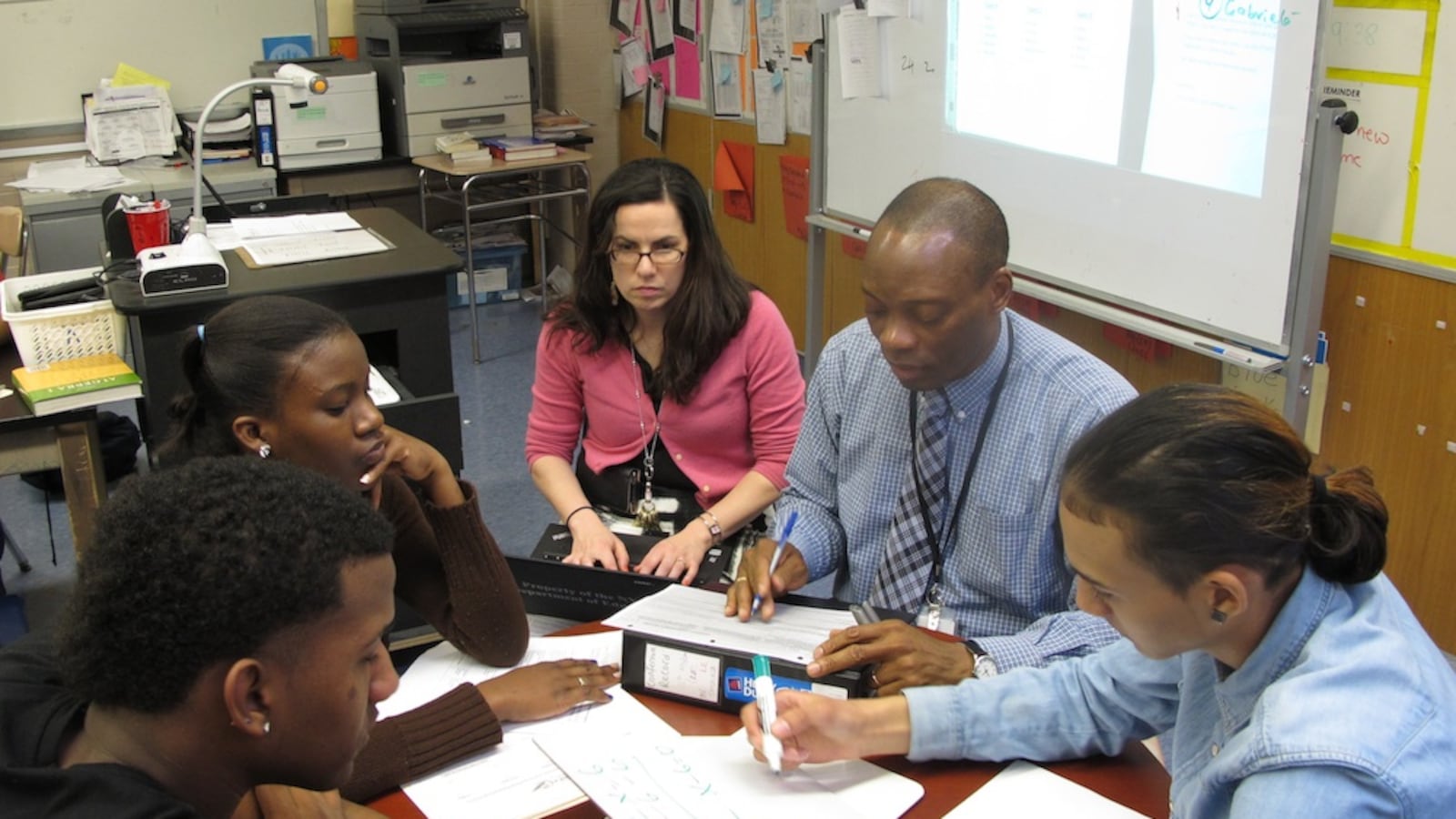Starting next fall, most New York City teachers could be judged by what principals see during just 30 minutes of instruction, in a change that addresses a persistent criticism of the city’s teacher evaluation system.
Under the terms of the tentative contract deal announced Thursday between the city and United Federation of Teachers, the number of observations required for city teachers would fall in most cases to two short classroom visits.
Currently, even teachers with top scores on the city’s evaluation system must be observed four times by their principals, or three times if they also agree to let their colleagues watch them teach. Under the tentative contract, those teachers would see the number of observations required annually fall to two.
For new teachers and teachers with low ratings, three or four observations would be required, down from four or six.
The change, which will become effective once union members ratify the contract, will likely satisfy critics who think the number of observations required is too onerous.
Each observation requires principals to spend at least 15 minutes in a classroom, plus time afterward to document what they saw and discuss their observations with the teachers. In larger schools, that can amount to hundreds of hours of paperwork on top of the time spent in classrooms.
“Most people are doing it as a compliance exercise” rather than using it to improve teaching and learning, UFT President Michael Mulgrew told Chalkbeat.
Changing the expectations, Mulgrew said, would allow “an open, frank conversation” between teachers and administrators about the purpose of evaluations — to help teachers improve, as well as identify those who are struggling.
The change is the latest adjustment to the city’s teacher evaluation system, first adopted in 2010. That system, which the teachers union agreed to only under pressure from the city and state, replaced one in which 97 percent of educators were rated “satisfactory” with one that offered finer distinctions in teacher quality and weighed student learning into the final score.
Over time, many elements of the new system have been whittled away. The state has halted the use of test scores in evaluations and given teachers more latitude to decide how their students’ learning should be measured. The city and union also previously agreed to reduce the number of qualities principals had to measure when observing teachers — a move endorsed by the observation framework’s designer — and started allowing teachers to choose more short observations instead of fewer long ones.
Under the new contract, almost all teachers would be eligible for the fewest required number of observations. Ninety-seven percent of teachers in New York City were rated “effective” or “highly effective” under the evaluation system in the 2016-17 school year, nearly as many as were typically rated “satisfactory” under the old system.
Principals say the change helps them by reducing — but not curbing — their paperwork load, while letting them direct their attention to teachers who are struggling. They would retain the right to visit all teachers’ classrooms and give feedback at any time.
“We’re better off spending more time with the teachers who need our help than with the teachers who are doing a bang up job,” said Mark Cannizzaro, president of the union that represents school administrators. “To say time is at a premium for our members is an understatement.”
And teachers say they are optimistic that requiring fewer observations would both help them improve and boost relations between teachers and their supervisors.
“Just to get everyone in is insane,” said Trisha Arnold, a Brooklyn teacher who was on the union’s negotiating committee, about the current requirements. “It doesn’t matter if you have six [evaluations] if they’re all rushed and crammed in. It’s not helping you.”
At the same time, Arnold said, “It’s OK to say to teachers who have proven themselves, ‘I trust you.’”

